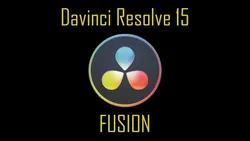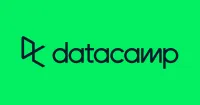
SQL for Data Analysis Course 
This course provides an introduction to Structured Query Language (SQL) and its use in data analysis. Experienced instructors will guide learners through the fundamentals of SQL, providing practical knowledge and skills to extract and analyse data stored in databases. ▼
ADVERTISEMENT
Course Feature
![]() Cost:
Cost:
Paid
![]() Provider:
Provider:
Udacity
![]() Certificate:
Certificate:
No Information
![]() Language:
Language:
English
Course Overview
❗The content presented here is sourced directly from Udacity platform. For comprehensive course details, including enrollment information, simply click on the 'Go to class' link on our website.
Updated in [March 06th, 2023]
This SQL for Data Analysis Course provides an introduction to the fundamentals of Structured Query Language (SQL) and its use in data analysis. Participants will learn how to manipulate and analyse multiple tables in order to answer complex business questions, as well as advanced SQL skills such as writing subqueries and advanced joins. The course will cover the fundamental SQL commands such as SELECT, FROM, WHERE, and the corresponding logical operators. Participants will also learn how to use subqueries, also known as CTEs, in a variety of situations; use window functions such as RANK, NTILE, LAG, and LEAD new functions, as well as partitions, to complete complex tasks; and clean data, optimise queries, and write advanced JOINS. By the end of the course, participants will have a comprehensive understanding of SQL and its use in data analysis.
[Applications]
After completing this course, participants can apply their knowledge of SQL for data analysis in a variety of ways. They can use their skills to query and manipulate data from multiple tables, answer complex business questions, and write subqueries and advanced joins. They can also use window functions, partitions, and new functions to complete complex tasks, as well as clean data, optimise queries, and write advanced JOINS. Additionally, participants can use their knowledge to create reports, visualisations, and dashboards to better understand and analyse data.
[Career Paths]
1. Data Analyst: Data Analysts use SQL to analyze data and create reports to help businesses make decisions. They use SQL to query databases, create visualizations, and develop predictive models. Data Analysts are in high demand as businesses increasingly rely on data-driven decisions.
2. Database Administrator: Database Administrators use SQL to manage and maintain databases. They use SQL to create, modify, and delete tables, as well as to query and update data. Database Administrators are in high demand as businesses increasingly rely on databases to store and manage their data.
3. Business Intelligence Developer: Business Intelligence Developers use SQL to develop and maintain business intelligence solutions. They use SQL to create data warehouses, develop ETL processes, and create dashboards and reports. Business Intelligence Developers are in high demand as businesses increasingly rely on data-driven decisions.
4. Data Scientist: Data Scientists use SQL to analyze data and develop predictive models. They use SQL to query databases, create visualizations, and develop predictive models. Data Scientists are in high demand as businesses increasingly rely on data-driven decisions.
[Education Paths]
1. Bachelor of Science in Data Science: This degree path focuses on the development of skills in data analysis, data mining, machine learning, and artificial intelligence. Students will learn how to use SQL to manipulate and analyze data, as well as develop skills in data visualization and predictive analytics. This degree path is becoming increasingly popular as businesses become more data-driven and the demand for data scientists grows.
2. Master of Science in Business Analytics: This degree path focuses on the application of data analysis and analytics to business problems. Students will learn how to use SQL to query and analyze data, as well as develop skills in data visualization and predictive analytics. This degree path is becoming increasingly popular as businesses become more data-driven and the demand for business analytics professionals grows.
3. Master of Science in Computer Science: This degree path focuses on the development of skills in computer programming, software engineering, and data science. Students will learn how to use SQL to query and analyze data, as well as develop skills in data visualization and predictive analytics. This degree path is becoming increasingly popular as businesses become more data-driven and the demand for computer scientists grows.
4. Master of Science in Data Science: This degree path focuses on the development of skills in data analysis, data mining, machine learning, and artificial intelligence. Students will learn how to use SQL to manipulate and analyze data, as well as develop skills in data visualization and predictive analytics. This degree path is becoming increasingly popular as businesses become more data-driven and the demand for data scientists grows.
Course Syllabus
Basic SQL
SQL Joins
SQL Aggregations
Advanced SQL Lessons
Course Provider

Provider Udacity's Stats at AZClass
Discussion and Reviews
0.0 (Based on 0 reviews)
Explore Similar Online Courses

Modern Money Habits: 5 Steps to Build the Life You Want

Davinci Resolve 15: FUSION

Python for Informatics: Exploring Information

Social Network Analysis

Introduction to Systematic Review and Meta-Analysis

The Analytics Edge

DCO042 - Python For Informatics

Causal Diagrams: Draw Your Assumptions Before Your Conclusions

Whole genome sequencing of bacterial genomes - tools and applications

The Data Analyst Course: Complete Data Analyst Bootcamp

Data Analysis in Excel

Database Design
 Related Categories
Related Categories
 Popular Providers
Popular Providers
 Popular Searches
Popular Searches
Quiz
 Submitted Sucessfully
Submitted Sucessfully
1. What is the purpose of the SQL language?
2. Which of the following is a logical operator?
3. Which of the following is a window function?


Start your review of SQL for Data Analysis Course